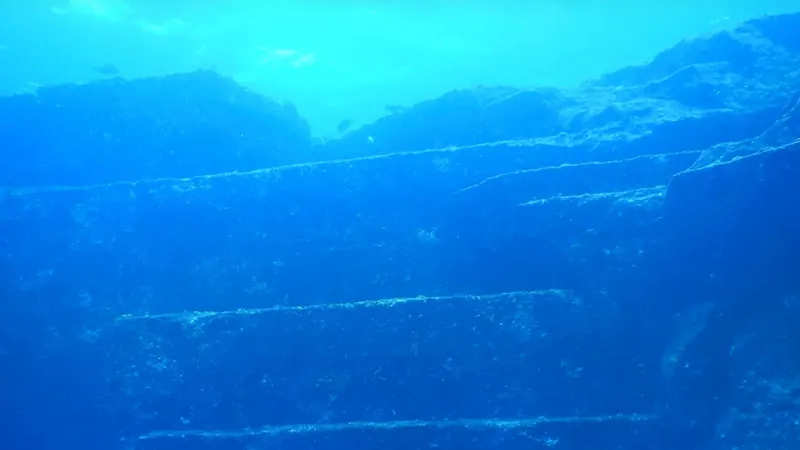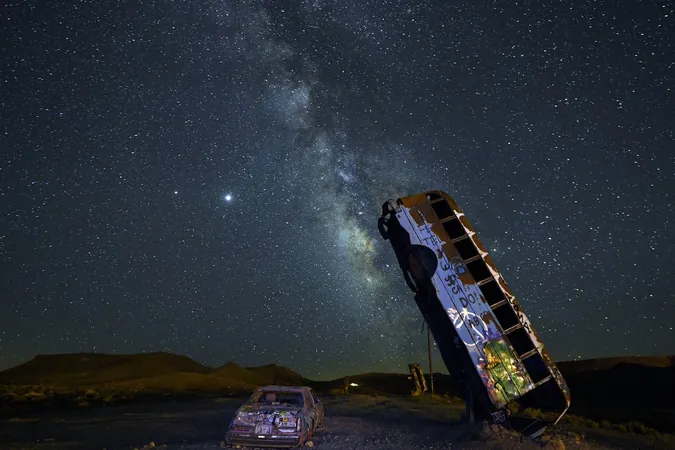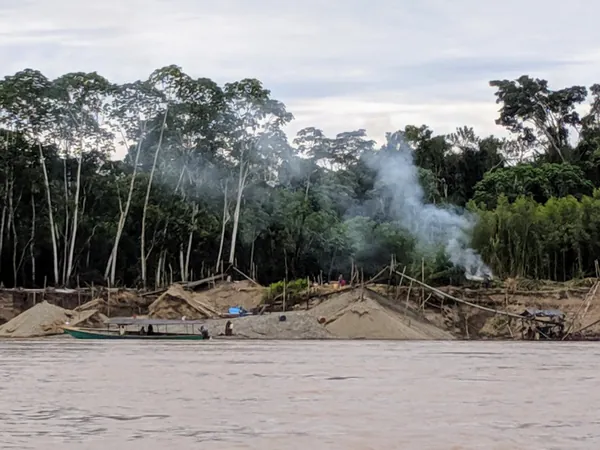
Unraveling the Enigma of ‘Japan’s Atlantis’: A 12,000-Year-Old Underwater Mystery!
2025-04-06
Author: Charlotte
Have you ever heard of Japan's own version of Atlantis? While many of us are familiar with the legendary sunken island of Atlantis from ancient Greek tales, the Yonaguni Monument beneath the waves near Yonaguni Island in the Ryukyu archipelago presents a similarly captivating tale that has intrigued explorers, scientists, and tourists alike.
Located just 62 miles from Taiwan, Yonaguni Island is home to a mere 1,684 residents, yet it holds a remarkable secret below its turquoise waters. In 1986, diver Kihachiro Aratake stumbled upon a series of mysterious rock formations while searching for hammerhead sharks. "I was very emotional when I found it," Aratake recalled, realizing he had discovered something unique. His excitement led him to keep the find under wraps initially, as he believed it could become an invaluable treasure for the island.
The Yonaguni Monument, measuring approximately 50 meters long and 20 meters wide, boasts intriguing features such as jagged steps and flat surfaces that give it the appearance of a lost city. The striking resemblance to an underwater metropolis has led many to dub it 'Japan's Atlantis,' but its origins remain a hot topic of debate.
Is this underwater marvel a product of human ingenuity from an advanced civilization, or is it a product of nature? Advocates of the man-made hypothesis suggest that the formations might be remnants of a lost civilization that thrived around 12,000 years ago. One of the most vocal supporters of this theory is geologist Masaaki Kimura, who has claimed that these structures could be evidence of an ancient continent known as Lemuria, constructed when sea levels were significantly lower.
Prominent author Graham Hancock, who has explored ancient civilizations and their mysteries, echoes Kimura's sentiments, discussing the site’s potential during his appearance on the Joe Rogan Experience podcast.
However, the scientific community largely disagrees with these assertions. The prevailing view amongst geologists, including Robert Schoch of Boston University, posits that the formations are a striking example of natural geological processes rather than human construction. Schoch describes the rock formation as a result of "basic geology and classic stratigraphy for sandstones," emphasizing how natural factors like tectonic activity can create straight edges and distinct patterns.
While questions surrounding the Yonaguni Monument continue to spark intrigue and debate, it remains a popular diving destination, attracting adventurous spirits eager to witness the enigma of Japan's Atlantis for themselves. Whether man-made or a natural wonder, Yonaguni stands as a testament to the enduring allure of sunken mysteries, inviting explorers to ponder the secrets it holds beneath the surface. Will we someday uncover the truth behind this captivating underwater marvel? Only time will tell!









 Brasil (PT)
Brasil (PT)
 Canada (EN)
Canada (EN)
 Chile (ES)
Chile (ES)
 Česko (CS)
Česko (CS)
 대한민국 (KO)
대한민국 (KO)
 España (ES)
España (ES)
 France (FR)
France (FR)
 Hong Kong (EN)
Hong Kong (EN)
 Italia (IT)
Italia (IT)
 日本 (JA)
日本 (JA)
 Magyarország (HU)
Magyarország (HU)
 Norge (NO)
Norge (NO)
 Polska (PL)
Polska (PL)
 Schweiz (DE)
Schweiz (DE)
 Singapore (EN)
Singapore (EN)
 Sverige (SV)
Sverige (SV)
 Suomi (FI)
Suomi (FI)
 Türkiye (TR)
Türkiye (TR)
 الإمارات العربية المتحدة (AR)
الإمارات العربية المتحدة (AR)